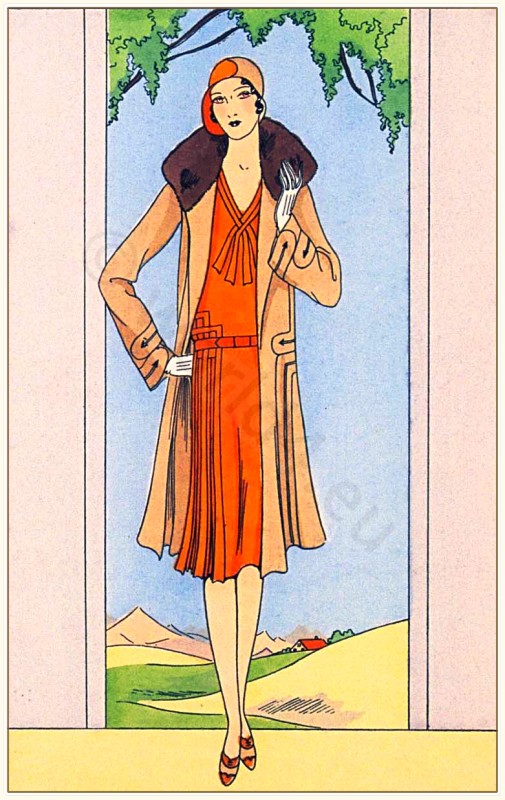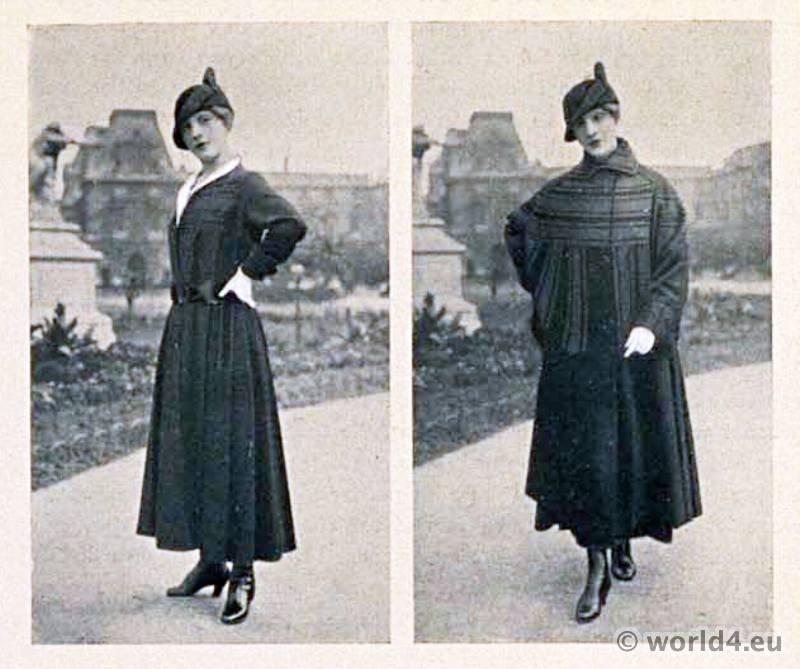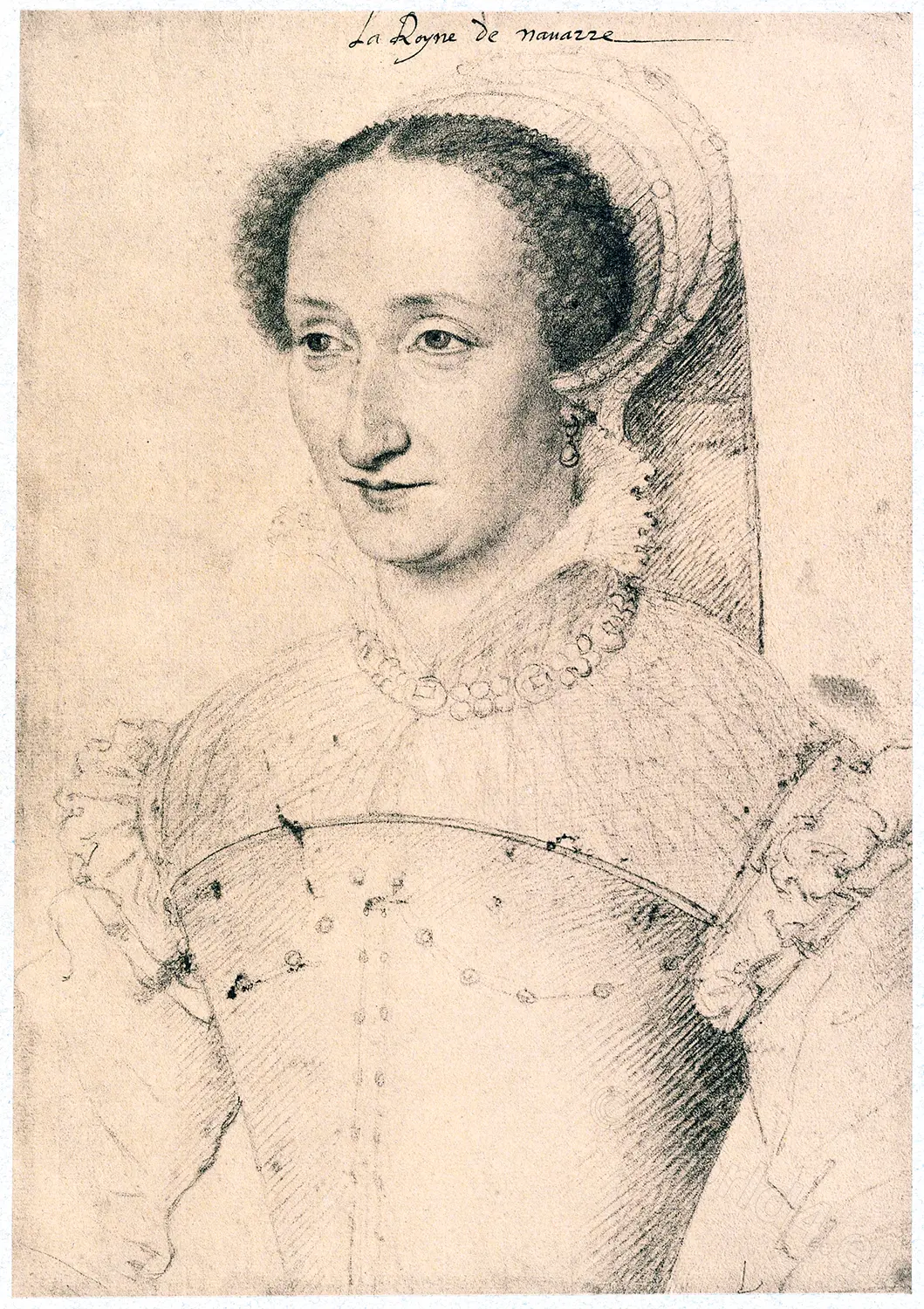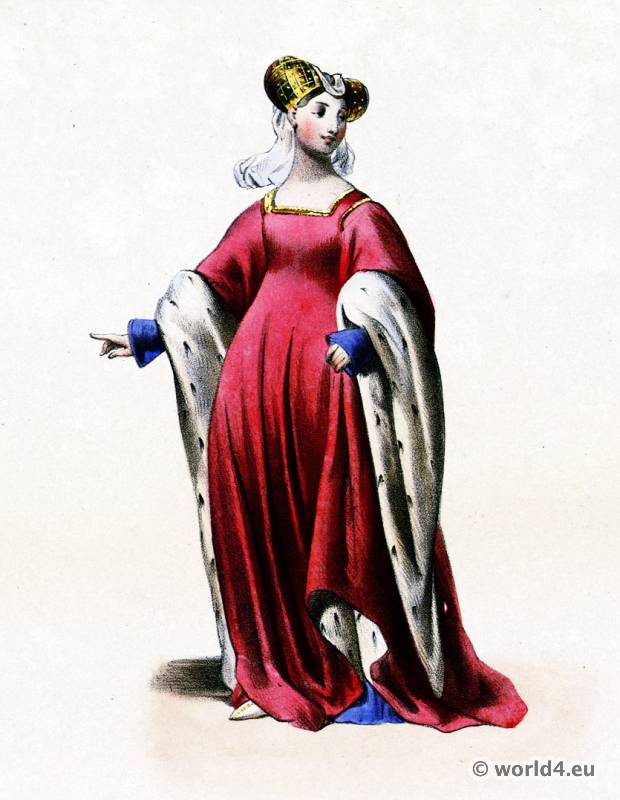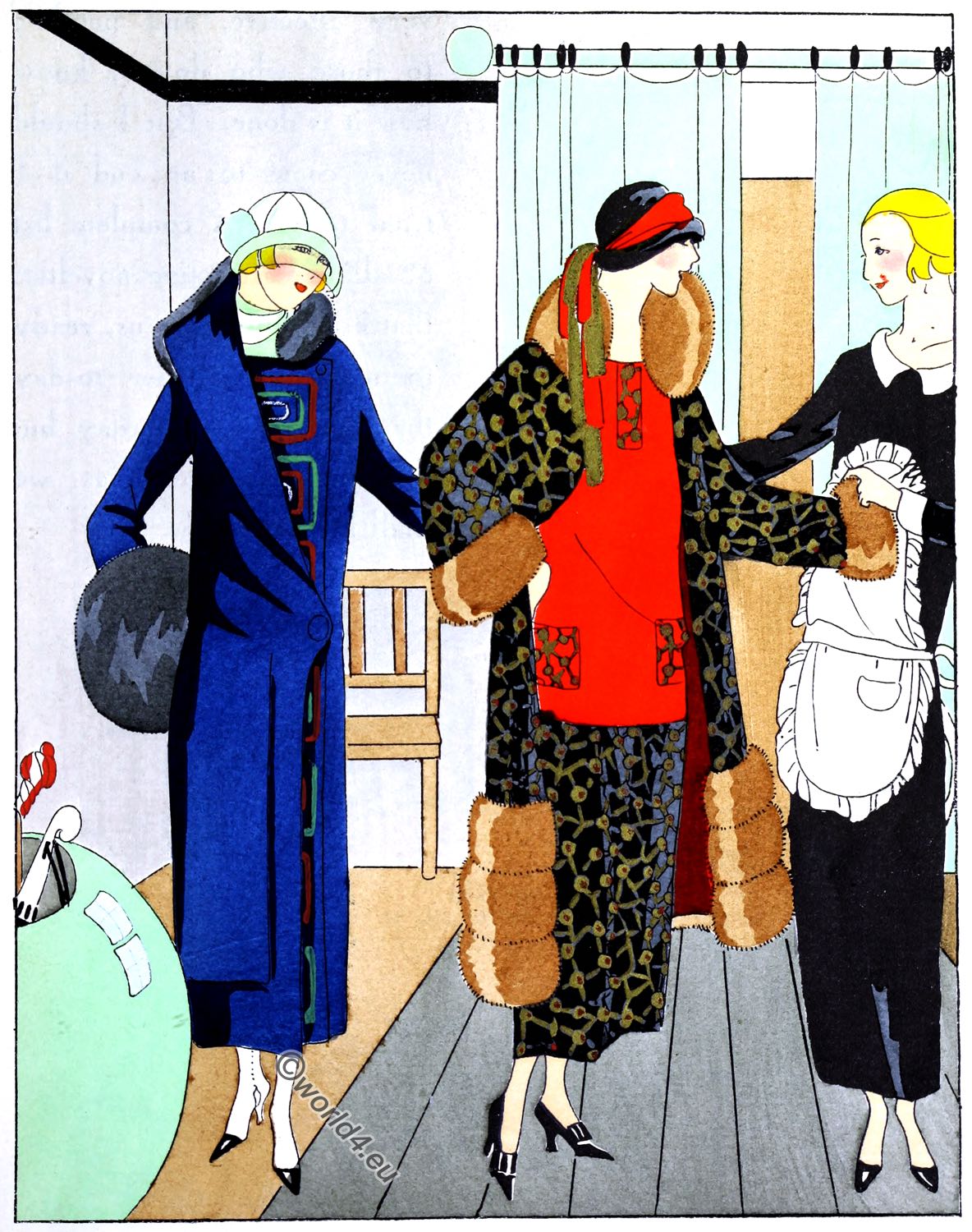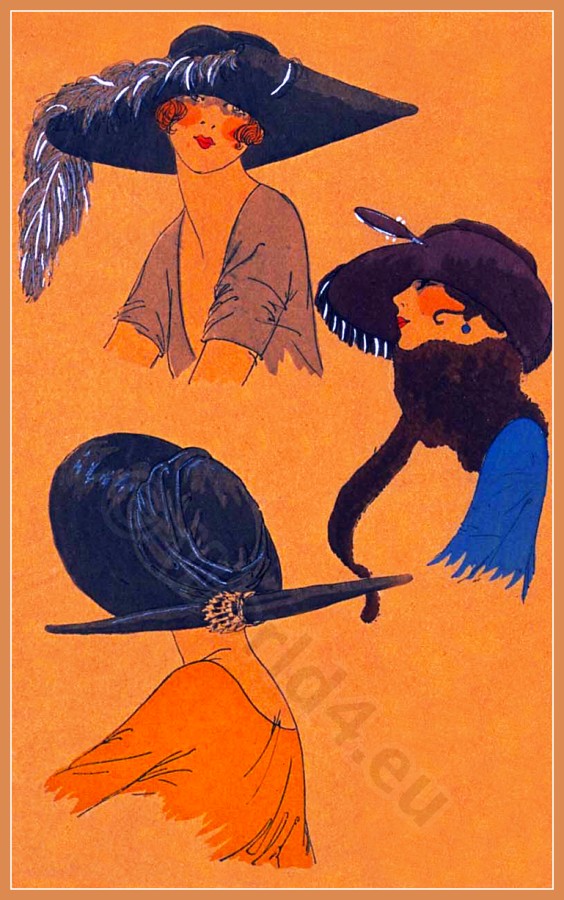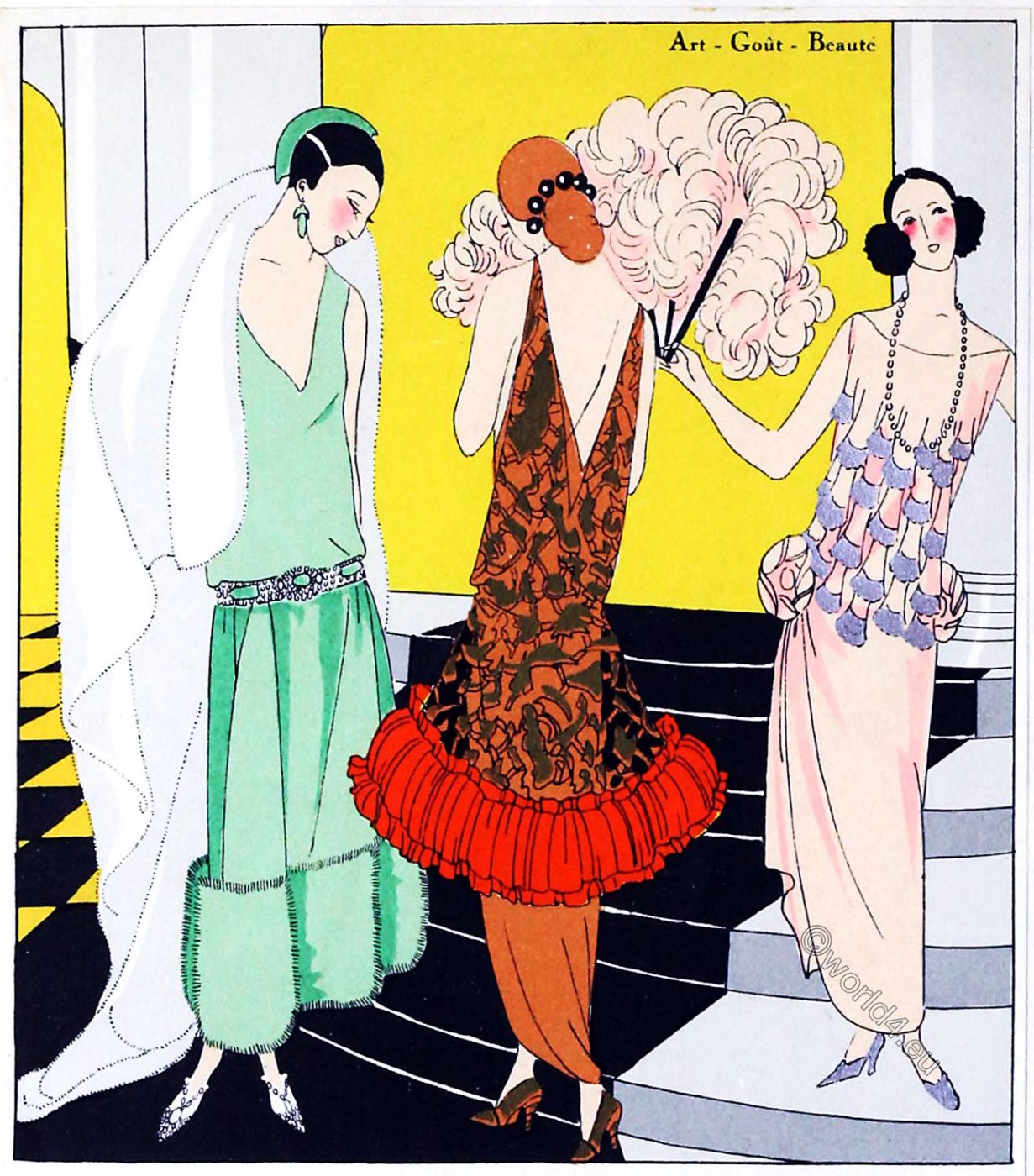
Jean Patou.
LA DANCE EST MON PÉCHÉ.
Jade-green crepe de Rome dress trimmed with marabout to match.
Jeanne Hallée.
MINARET.
Brown velvet, gold lace tunic, trimmed with nasturium petals.
Molyneux.
Flesh-colored velvet dress with silver embroidery and train effect at the side.
Another old custom gone. October 1923.
In former times the dressmakers absolutely refused to let anyone know before April what summer dresses would be like, and, as for trie winter styles, they were kept a profound secret until the end of October. Judging by what they said, they would rather have died than depart from this custom. All that has now gone by the board. At the present moment, there is not a single leader of fashion who does not know what is being done by Callot, Doucet, Worth, Premet, Cheruit, Madeleine Vionnet, Chanel, Molyneux and the rest of them,
All the initiated are delighted by the continuance of the straight and slender line, to which they intend to adhere in spite of isolated attempts by two or three dressmakers in the direction of greater fulness. They also refuse to be tempted by the idea of putting the waist in its normal place, which they regard as abnormal and ungraceful.
On the other hand, they have no objection to Jenny s new sleeves, which are wider than those previously in favour and help to give a little more fulness to the bust, which is sometimes too much subordinated in the dresses of to-day.
Source: Art-Goût-Beauté: feuillets de l’élégance féminine. Paris: Albert Godde, Bedin et Cie. 1921-1933. Drawings by J. Dory, Marioton and Vitrotto.
Related
Discover more from World4 Costume Culture History
Subscribe to get the latest posts sent to your email.

